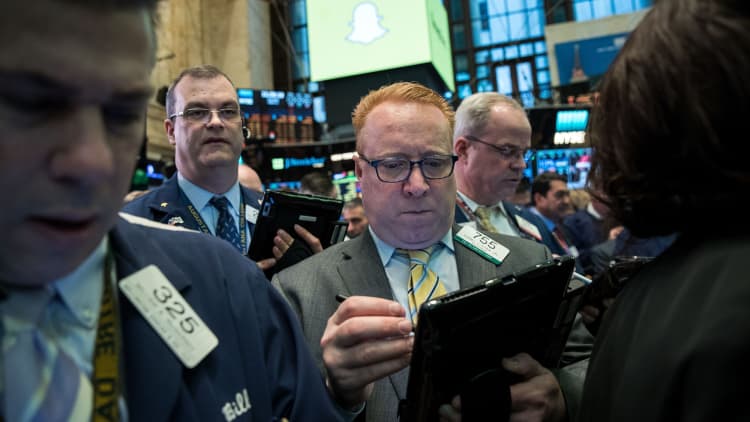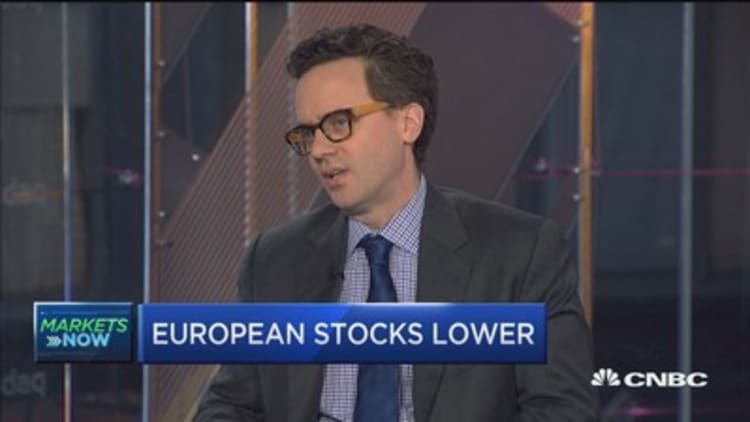
The Trump rally is just the latest leg in a wild 8-year-old explosion higher, but mom-and-pop investors still aren't impressed.
By multiple measures, the retail-investing crowd has not been a significant player in the second-longest bull market on record.
Sentiment surveys show fewer than 1 in 3 believe stocks will be higher six months from now. Households were net sellers of stocks in 2016 and even exited stocks during the fourth quarter, when Donald Trump's upset presidential victory sent the market surging. And at least one market expert believes the trend of retail investors sitting things out is likely to continue through the year, despite its promising start.
"In 2017, we expect history will repeat itself," David Kostin, chief U.S. equity strategist at Goldman Sachs, said in a report for clients. "Corporations and (exchange-traded funds) will continue to drive equity demand while mutual funds, households, and pension funds will remain net sellers of equities."
Households are coming off a year in which they sold a net $39 billion in equities during a year that saw the rise nearly 10 percent (12 percent including dividends), according to data from the Federal Reserve compiled by Goldman.
Mutual funds, which Morningstar estimates to be 65 percent owned by retail investors, dumped a net $117 billion during the year, including $46 billion in a fourth quarter when the S&P 500 gained 3.3 percent. Foreign investors also sold U.S. stocks, ditching $60 billion worth after the election.
Kostin expects the tide to continue, with mutual funds forecast to sell a net $50 billion this year.
There are multiple possible explanations for the selling. Some retail investors may simply be raising cash, while the outflow from mutual funds comes amid a pronounced move from actively managed funds and into passively managed ETF products.
However, the bearish sentiment during the current rally is harder to figure.
The most recent survey from the American Association of Individual Investors puts the bulls at just 31.2 percent, well below the long-term average of 38.5 percent. Bearishness came down from 46.5 percent the week before to 38.7 percent, but remains above the average.
"There's a lot of concern that stocks have just run too far, too fast, without a break," said Charles Rotblut, vice president and editor of the AAII Journal.
Contrast that with the Investors Intelligence survey of market professionals that just two weeks ago had bullishness at a 30-year high, and the disparity becomes even clearer.
Worrying about Washington
It may just be that the institutional crowd has more of a stomach for all of the political volatility happening in Washington.
"Those two behaviors are really detached, because an institutional investor is looking specifically at how is the overall economy going to do, and an individual is looking at their own comfort," said Michael Kresh, managing member of Creative Wealth Management, a boutique firm based in Islip, New York. "This isn't a fear of the market, this is fear of what's going on in Washington and how that's going to come out."
Kresh said his clients' political stances definitely lean to the left, and they worry that Trump's seemingly daily controversies are going to eat into their investments and retirement funds.
"What's happening here is there's a strong issue with the news out of Washington," he added. "Although the institutional player believes that the administration is going to be very beneficial for the market as they cut back regulations and everything else, individuals are becoming more uncomfortable with a lot of the infighting issues."
The good news for those who have stuck it out in the market is there should be plenty of institutional cash around to continue to push up stock prices.
Goldman forecasts that corporations will be buying about $700 billion worth of shares this year. Net equity purchases from corporations and ETFs in 2016 totaled $584 billion and $188 billion, respectively.
That the retail crowd still isn't ready to dive into the market carries some silver lining. Usually, strong retail participation signals a bull market has expended nearly all its energy. The downside is that it also points to the disturbing historical trend of individual investors buying high and selling low.
"There's a love-hate relationship when that happens. Professionals know that's the beginning of the end," said Mitch Goldberg, president of ClientFirst Strategy, also a boutique firm, in Dix Hills, New York. "If you're into risk management, this is not a happy time."
Based on what he's gleaned from his own clients, Goldberg predicts that the sentiment surveys are going to turn soon.
"I see the interest in equities rising now," he said. "It doesn't necessarily mean a bear market is right around the corner."
WATCH: Trump could ease the market's worry with some economic details



